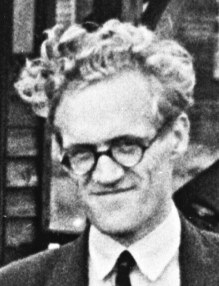|
 Freddie ‘FC’
Williams studied engineering at Manchester University
receiving a BSc in 1932 and MSc 1933. He was later awarded a scholarship
to Oxford where he received a DPhil in 1936 for work on circuit and valve noise.
He then returned to Manchester University continuing research into
electronics. Early in 1939 he was recruited by Prof Blackett (a member
of the Tizard Committee) to join the radar team, then at Bawdsey Research
Station. Freddie ‘FC’
Williams studied engineering at Manchester University
receiving a BSc in 1932 and MSc 1933. He was later awarded a scholarship
to Oxford where he received a DPhil in 1936 for work on circuit and valve noise.
He then returned to Manchester University continuing research into
electronics. Early in 1939 he was recruited by Prof Blackett (a member
of the Tizard Committee) to join the radar team, then at Bawdsey Research
Station. During the war Freddie Williams led the development of IFF (Identification Friend or Foe),
and also worked on AI (Airborne Interception). He became an expert at
inventing new designs for electronic circuits - often using valves in
unconventional ways. By the time of the move to Malvern, he led a small
group which designed and developed electronic circuits to support other groups
in TRE. After the war Freddie Williams returned to Manchester University
where he pioneered digital computer technology. In 1946-47 he
experimented using Cathode Ray Tubes with a long afterglow to store digital
information. By the end of 1948 the team he led had built a working
computer - the Manchester Mark I. The design of this computer was
enhanced by Ferranti to be called the Ferranti Mark I. Production
started, and early in 1951 this became the world's first commercially
available computer. Prof Sir Frederic Calland Williams FRS
26 June 1911-11 August 1977
|